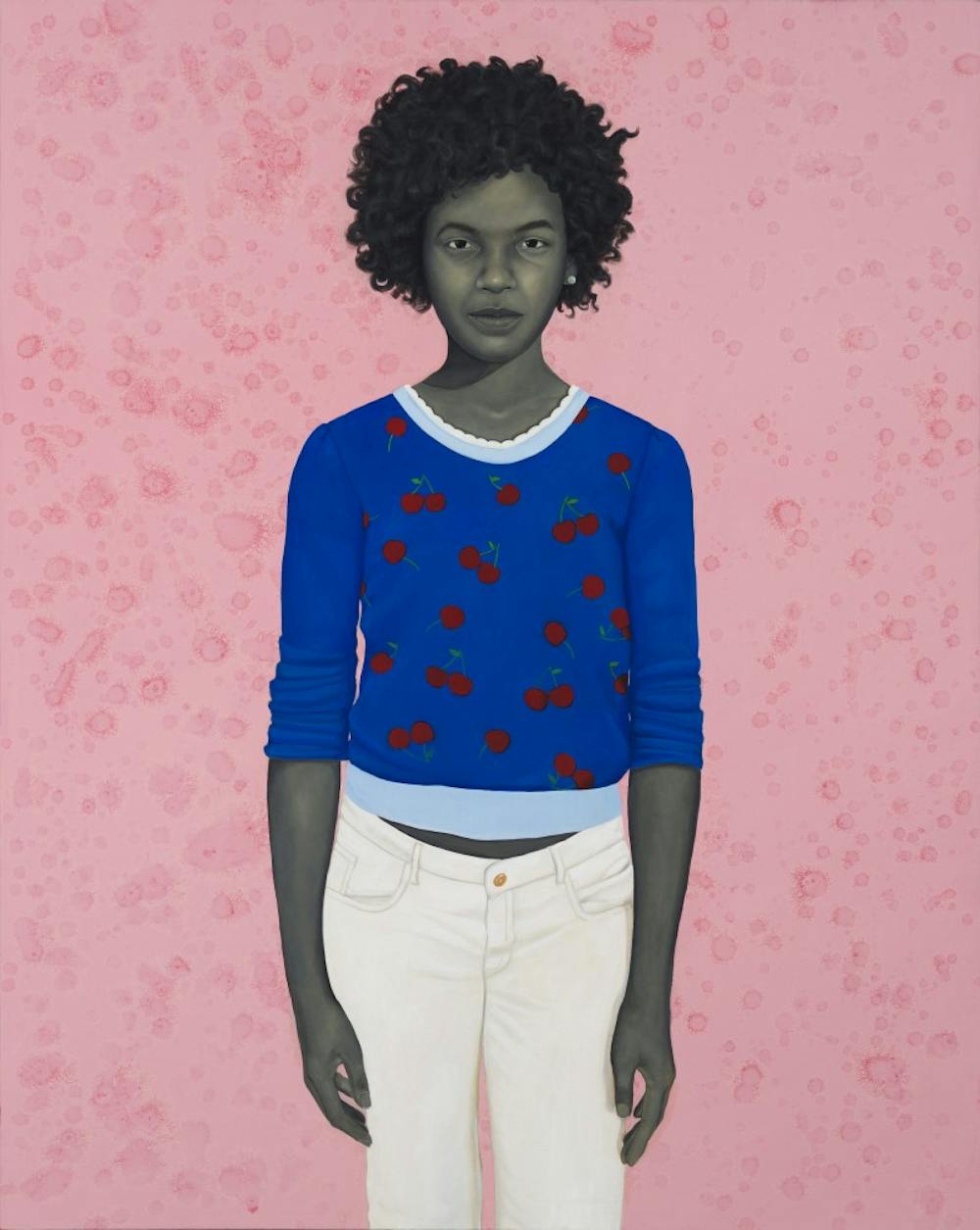In recent years, the United States has seen a resurged emphasis on identity in politics. This lends greater national attention to many provocative visual artists, particularly those who seek to subvert the tenets of an oppressive society, like the lack of representation of marginalized groups in media.
An artist working at the forefront of this group is Amy Sherald, a Baltimore-based painter known for portraiture that explores black identity in the Southern U.S. Sherald will visit Hopkins next Thursday, Oct. 26, to speak about her work at a talk titled “‘Stories’: A Slide Talk by Painter Amy Sherald.”
After a career of about 20 years, Sherald’s work was recently acquired by the Smithsonian National Museum of African American Art and Culture and the Smithsonian National Museum of Women in the Arts.
Earlier this month, it was announced that Sherald would paint Michelle Obama’s portrait for the Smithsonian’s National Portrait Gallery.
In an interview with The News-Letter, Sherald said that she was drawn to portraiture because she grew up seeing traditional European paintings and wants to see more black representation in that historical narrative.
“Over time, black people, we became authors of our narrative, so that’s why it’s important to me now,” she said. “Representation matters a great deal, especially in times like these.”
She said that she aims to change people’s expectations with her work. According to Sherald, people often expect to see a typical European style when they go to a museum, and she hopes that seeing her work on display will change their perception.
Sherald added that having her work displayed is important to her because museums elevate the importance of the narratives they present.
“It’s important to have narratives and tell stories that are extricated from the dominant historical narrative, that celebrate our identity in ways that normally you don’t see yourself represented,” she said.
Craig Hankin, director for the Center of Visual Arts at Hopkins, said that Sherald’s portraiture speaks to larger issues of identity and representation in this country.
He said that while everyone has the right to representation, many politicians don’t agree. Challenging those in power is why it is important for artists like Sherald to have their voices heard.
“That’s what marks her as an artist of our time, an artist who is alive and conscious and working right now,” Hankin said. “Now here we are in this horrifying Trumpian era of intolerance and bigotry, and her work resonates louder than ever.”
Hankin said that he hopes Sherald will show students that there are artists working locally in Baltimore. He added that she is the first Baltimore-based painter to speak at Hopkins in years.
Sherald was raised in the South, but came to the Maryland Institute College of Art to complete her master’s degree. She said that her move to Baltimore caused her to shift the focus of her work to social issues after seeing the level of poverty in the city.
“It made me want to produce works that could be mirrors for people to see themselves in,” Sherald said. “A lot of us are controlled by these external directives, and these external directives influence how we see ourselves and how we experience life.”
With her artwork, Sherald said that she wants to provide a place to affirm and nurture the identities of her viewers.
Hankin added that Sherald’s portraits interact with people who have been marginalized in mainstream culture, which is especially important given today’s political circumstances.
“What Amy has always tried to do in her portraits and figures is to give voice and visibility to a population in our country that has been largely ignored in the fine arts, certainly in the history of Western art,” he said.
Hankin added that in the current political climate, such work takes on even greater consequence.
“In this moment in our political history, I couldn’t think of a more important or significant artist to have speak at Hopkins,” he said.
Sherald said that it was important for her to persevere throughout her career and refuse to grow complacent with her art.
She said that it is important to commit to a goal and then think critically about how to get there and what the investment means.
“If you’re not comfortable being uncomfortable, then it may not be the career for you,” she said. “You have to be willing to take risks and live creatively and experience as much life as you can, because all that comes back into the work. And tell your parents that they’ll be paying your rent until you’re 35.”

















